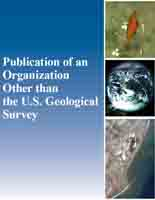High variability of migration strategies in a re-established Cygnus buccinator (Trumpeter Swan) population
Links
- More information: Publisher Index Page (via DOI)
- Open Access Version: Publisher Index Page
- Download citation as: RIS | Dublin Core
Abstract
The Interior Population (IP) of Cygnus buccinator (Trumpeter Swan), formerly extirpated by market hunting, was re-established in eastern North America by releasing individuals from both migratory and non-migratory populations. Their current annual movement patterns are largely unknown. We deployed 113 GPS-GSM transmitters on IP C. buccinator in 6 U.S. states and 1 Canadian province across the current IP breeding range. Using data from 252 “swan-years”, we estimated migration phenology using piecewise regression models fit to each yearly time-series of displacement from the breeding site. We fit a latent-state model to characterize population-level associations between breeding latitude and maximum extent of migration, and linear mixed models to quantify associations between individual characteristics (e.g., breeding status, sex) and migration phenology. At the individual level, 59% of swans moved to distant nonbreeding-period areas (long-distance migration, defined as moving >100 km from the breeding site), 16% exhibited regional migration (25–100 km from breeding site), 19% exhibited non-migratory but local movements (<25 km from breeding site), and 6% exhibited multiple migration strategies. Swans breeding at more-northern latitudes departed their territories earlier in autumn, returned later in the spring, and migrated farther from their breeding territories than those breeding at more southern latitudes. Although the population-level association between migration extent and breeding latitude was positive, some individuals remained close to the location of their breeding site during the nonbreeding period. Breeding swans departed later in the autumn than non-breeders, but breeding status did not have a strong association with arrival in the spring. IP C. buccinator are partial migrants, with a continuum of strategies that vary latitudinally, from local movements to long-distance migration. Much of the variability in movement patterns related to factors tied to natural history demands (e.g., breeding status) and response to environmental conditions (e.g., through associations with breeding latitude).
| Publication type | Article |
|---|---|
| Publication Subtype | Journal Article |
| Title | High variability of migration strategies in a re-established Cygnus buccinator (Trumpeter Swan) population |
| Series title | Ornithology |
| DOI | 10.1093/ornithology/ukae059 |
| Volume | 142 |
| Issue | 2 |
| Publication Date | November 27, 2024 |
| Year Published | 2025 |
| Language | English |
| Publisher | Oxford Academic |
| Contributing office(s) | Coop Res Unit Leetown |
| Description | ukae059, 12 p. |


